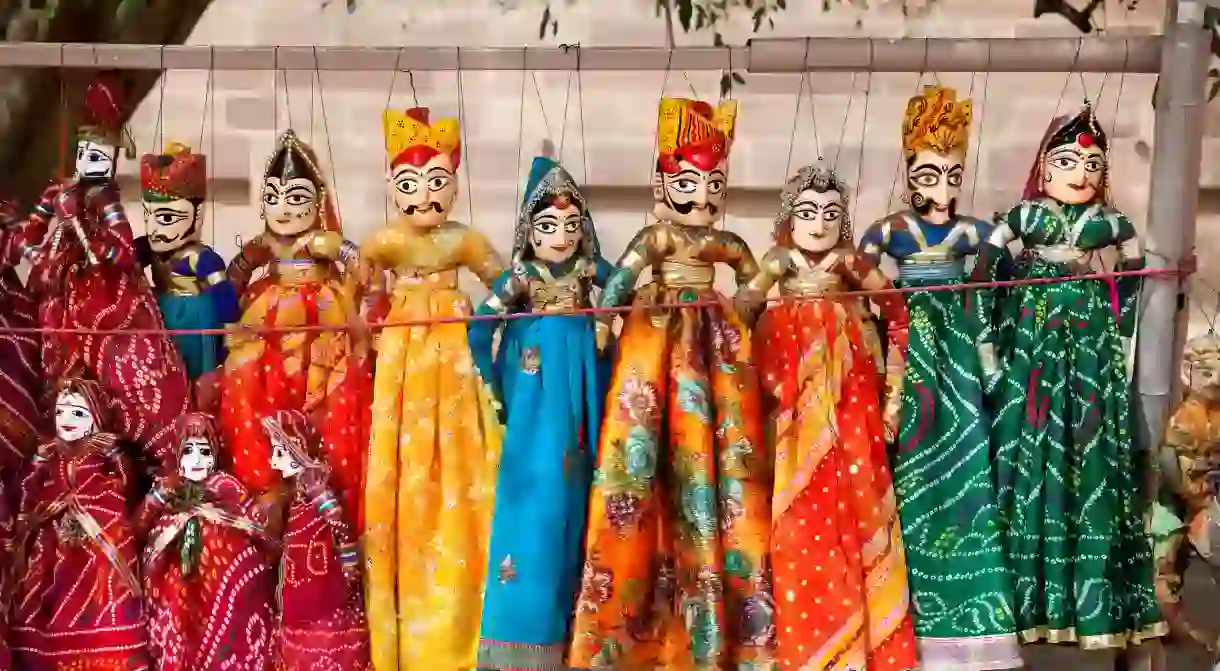Folk Dances From Rajasthan You Should Know About

Rajasthan, the royal state of India, is known for its rich cultural heritage. Folk dances play an important part, which are not only aesthetically pleasing, but also narrate stories in a unique and captivating way. Here are eight folk dances from Rajasthan you should know about.
Did you know – Culture Trip now does bookable, small-group trips? Pick from authentic, immersive Epic Trips, compact and action-packed Mini Trips and sparkling, expansive Sailing Trips.
Ghoomar

Quintessentially Rajasthani, Ghoomar is probably the most popular folk dance in India. This dance form was introduced by the Bhil tribe, and later adopted by the royal communities of Rajasthan, including Rajputs. It is performed by women on special events and festivals, such as the arrival of a newlywed bride at her marital house, Holi and Teej.
The women wear traditional outfit, which is ghagra (a long, swirling skirt) and kanchli or choli (a blouse). To complete the ensemble, a veil is worn covering the face. The beauty of this folk genre is in its graceful movements that involve swaying hands, beating palms and spinning around, while singing the traditional songs. The coordinated movement among women and their whirling outfit, coupled with the upbeat rhythms and songs, leave the spectators mesmerised.
Kalbeliya
Considered by UNESCO as Intangible Heritage, Kalbeliya is performed by the women of the namesake tribe. Women deck up in traditional costume, which is angrakhi (a jacket-like garment), odhani (veil) and black swirling ghagra (long skirt), and dance sensuously and sinuously to the music played by the men using traditional instruments, such as dholak (two-headed hand drum), khanjari (percussion instrument) and pungi (a woodwind instrument). The dance movements are mostly serpent-like, hence it is also referred as ‘Snake Charmer dance’ or ‘Sapera dance’.
Bhavai
Bhavai is Rajasthan’s ritualistic dance, which is usually performed by women belonging to Kalbelia, Jat, Meena, Bhil or Kumhar tribal communities of the state. The dance involves women balancing eight to nine brass pitchers or earthen pots on their head as they dance and twirl with their feet on the perimeter of a brass plate or on the top of a glass. The dance is accompanied by male performers singing and playing instruments, such as harmonium, sarangi and dholak. Because of its high level of difficulty and complexity, it takes years for the performer to master the dance form.
Kachchhi Ghodi

Originating in the Shekhawati region of Rajasthan, Kachchhi Ghodi is one of the most popular folk genres that depict the stories of the local bandits of the region through dance and music. Traditionally, only men – dressed in dhoti-kurta and turban, and riding on an elaborately decorated dummy horse – perform this dance, which is meant to be symbolic of chivalry and bravery. The rhythm of the dance is defined by the flute music and drums, and the dancers usually mock fights using swords to complement the rhythm. It is mostly performed during weddings or social events.
Gair
Featuring attractive dance movements, traditional instruments and colourful outfits, Gair is predominantly performed by the Bhil community, mainly on festivals such as Janmastami (celebration of birth of Lord Krishna) and Holi. Both men and women dance together, dressed in traditional garbs. The men don a full-length tunic-like skirt complete with a stick, sword and arrow in hand, while women wear ghagra choli.
Colourfully-dressed dancers circle one another, moving in clockwise and anti-clockwise direction and swinging their arms to the powerful drum beats. The men beat their sticks when they turn, which adds a dramatic touch to the dance.
Chari
Chari is another ritualistic dance that primarily belongs to the Saini community of Ajmer and Gujjar’s of Kishangarh. Enacted by women, it is usually performed on special occasions, such as the birth of a male child, marriage or festival. It symbolises joy as well as representing the ritual of collecting water in chari, which means pot. The women are attired in traditional outfit and dance while balancing brass chari on their heads, along with a lighted lamp in it. The dance is accompanied by sounds of dholak, harmonium and nagada (percussion instrument).
Kathputli Dance
Kath means wood andputli means doll with no life. Kathputli is an ancient form of puppet dance that was started by the Bhat tribal community of Rajasthan several thousand years ago. Characterised by brightly coloured dolls (referred as puppets), a Kathputli performance narrates stories from Indian folklore and mythology, along with the social problems prevailing in the country. The puppets are controlled and manoeuvred by the puppeteers via strings, which are attached to the puppets. The strong voices produced by the puppeteer give Kathputli dance a distinctive flavor.
Chang
The centrepiece of Rajasthan’s Holi festival, Chang is a lively folk dance that originated from the Shekhawati region (Bikaner, Churu, Jhunjhunu and Sikar). Also called as Dhamal, the highlighted characteristic of this dance form is the fast-paced rhythmic beats of the chang instrument (a type of tambourine), upon which a group of men dance, sing and carouse. Another notable feature is that some men dress up like women – donning traditional attire and performing ghoomar, which certainly captivates the eyes of those who watch!













